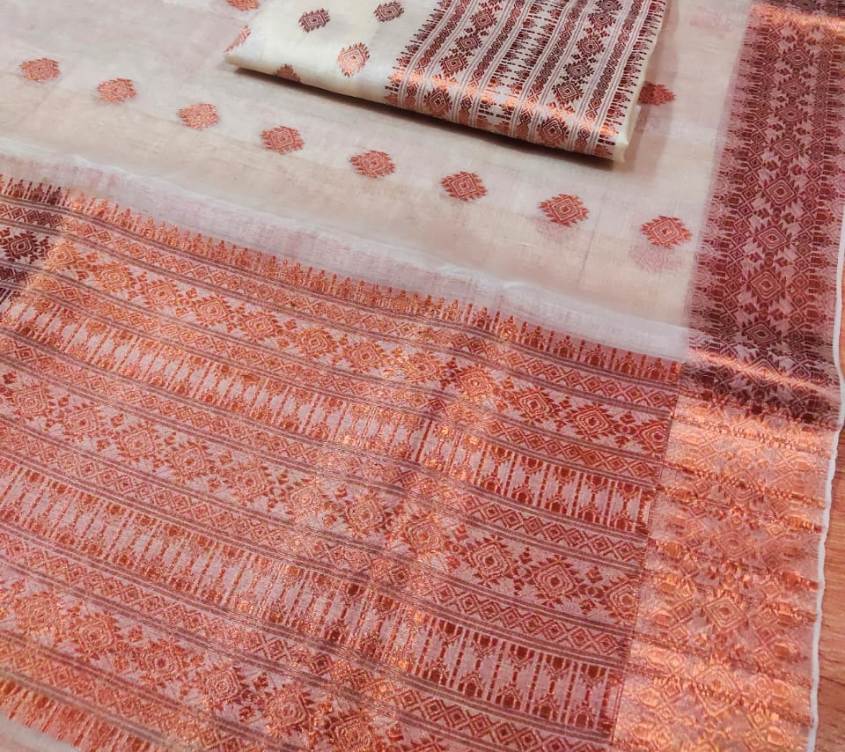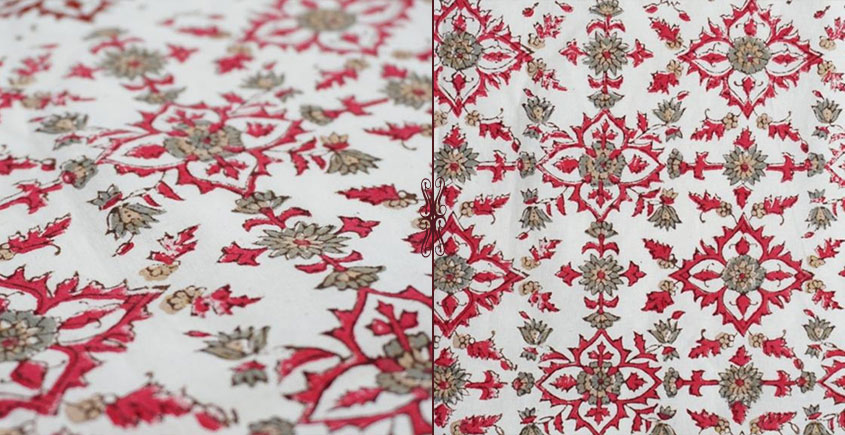The sources of natural dyes are flowers, berries, roots, rinds, wood, lichens, and the gall of plants which yield earthy colour tones of browns and buffs. For example, crimson and scarlet hues are obtained from the female insect, cacti and lac, which is found encrusted on the branches of some specific trees, purple is obtained from the trumpet shell and so on.
Natural dyes are the colorants extracted from naturally available resources like mineral ores and vegetables. Practitioners of this craft are found in Gujarat. Vegetables are commonly used colouring agents in the form of roots, leaves, barks and flowers. Evidence of dyeing goes back to Neolithic times and thus craft of dyeing with vegetable colours has long been imbibed in the cultures of early civilisations. Natural dyeing has symbolised the traditional practises of craftsmanship – of a sustainable ecosystem between mother earth and the human race. Natural dyes and pigments are used in painting, dying and printing on textiles, on walls and in Ayurveda and cooking among other uses.
It is the dexterity of dyers in India that is famed as they have been renowned for the brilliance of the colours and correct processing of the fabric. The colouring matter is extracted from the natural dye which is in combination with locally available auxiliaries which is then applied to the textile. Mordanting is a crucial precursor to dye absorption as the dye does not have direct affinity with the textile. Locally available resources are used as mordents, while water adds on the unusual differential characteristic to dyeing in different places.
The British introduced synthetic dyes in India in the nineteenth century, after which the use and production of natural dyes began to decline. Apart from textiles, vegetable dyes are also used to colour wood, mats, basketry, pith, ivory and leather. The names of colours prevalent were piyaji (onion skin), sumai (blue-black), basanti (yellow), asmani (sky-blue), neel (blue), badani (beige), sonali (golden), abir (red), and dhani (yellow green).
Botanical Names of Natural Dyes, Colour and Parts Used:
1. Acacia catechu – Maroon & Brown Wood – Extract
2. Artocarpus integrigolia – Yellow – Sawdust
3. Bixa orellana – Orange – Seed
4. Punica granatum – Khaki – Rind
5. Curcuma longa – Yellow – Rhizome
6. Diospyros peregrina – Pink – Fruit
7. Nyctanthes arbortristis – Orange – Stem
8. Tagetes patula – Yellow – Petals
9. Acacia Arabica – Pink – Sawdust
10. Terminalia chebula – Grey – Ripe and unripe fruit
11. Rubia cardifolia – Brick Red – Root
12. Terminalia arjuna – Beige – Bark
13. Ceriops roxburghiana – Salmon Pink – Bark
14. Cedrela toona – Pink – Sawdust
Some other key dye sources are as follows:
– Yellow is obtained from root of the plant Morinda persical folia. The roots are cut and boiled along with salt; the resultant solution dyes the yarn an even shade of yellow.
– Brick-red is extracted from the leaves of the plant, Rhynchosatia sp; the leaves are ground into a paste to which lime juice is added gradually till the colour turns brick-red.
– Black is obtained from the plant, Lenia grandis by crushing the fruit. The fruit is boiled in water with salt till the solution turns gray. The yarn is then immersed and boiled in this solution till it turns gray; after being buried in clay soil for 24 hours, it turns black.
– Orange is obtained from the bark of Phyllanthus emblica, Lenia grandis and Artocarpus lakoocha. The bark of the three plants are combined in equal portions and soaked in water for 15-20 days. When the solution turns orange, the yarn is immersed for a few hours, stirred occasionally then washed and sun-dried.
– Charcoal-grey is obtained from the plants, Careya arborea, Lenia grandis and Eugenia Jambolana when the bark of the three plants are combined in equal portions and steeped in a vat for 15-20 days. When the solution turns orange, black potters clay is added in 1:6 proportion. The yarn is soaked for 5 hours, washed and sun-dried.
– Red is obtained from Morinda persicalfolia by powdering the root and mixing it with water. The yarn, treated with mustard oil, is soaked in the solution for three days, wrung and dried in the sun.
– Red is also obtained from the seed of the plant, Bixa Orellana where the seeds are soaked with turmeric paste and lime along with yarn for three days. Yarn is then boiled, washed off and dried. The process is repeated to deepen the colour.
– Dark brown is obtained from the plant, cocos mucifera from the coir, where it is boiled with a turmeric powder till it turns brown. The yarn is soaked for a few hours, wrung and sun-dried.
– Pink is obtained from Ceriops Roxsburghiana by boiling the bark with soda till the solution turns pink. Yarn is boiled in it for dyeing, after which it is washed and dried in the sun.
– Blue-black is obtained from the leaves of Indigofera sumatrana where the leaves are soaked in the water and fermented. A small amount of bamboo ash is added to it. Yarn is put in and boiled till it turns blue-black; repeated boiling deepens the colour.
The vessel type used for dyeing yarn has to be chosen carefully. Earthenware is suitable, but it’s porous nature results in absorption of liquid dyes. Each dye has to have a separate container. The best containers for dyeing are those made of copper or stainless steel; these materials do not react with the natural dyes and are very hardy. Earthen vessels are ideal for scouring, washing and bleaching. Natural dye solutions like kasmi and neel can be stored in earthen containers. The size of the containers chosen depends on the amount of material to be dyed.
Cost benefit analyses have shown that vegetable dyes are more economical than imported chemical dyes; catechu, the most expensive of the natural dyes is well below the cost of an equivalent synthetic dye. The average costs of natural dyes are 10-20 per cent that of synthetic dyes. Additionally, natural dyes are sustainable and very good for the environment as they do not pollute or make ground water and soil toxic. If use of natural dyes increases, it will help in the revival of traditional crafts, based on indigenous sources and create an eco friendly substitute for todays synthetic colours.
Gallery
YOUR VIEWS
PRACTITIONERS: INDIA
Access 70,000+ practitioners in 2500+ crafts across India.
BIBLIOGRAPHY
10,000+ listings on arts, crafts, design, heritage, culture etc.
GLOSSARY
Rich and often unfamiliar vocabulary of crafts and textiles.
SHOP at India InCH
Needs to be written.






